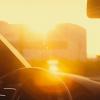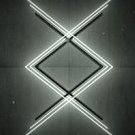-
Posts
391 -
Joined
-
Last visited
Reputation Activity
-
 sunyata reacted to Christina Ava in Grading
sunyata reacted to Christina Ava in Grading
A website featuring stills from films and their corresponding color palettes.
A tool to promote learning and inspiration. Updated daily.
http://moviesincolor.com/
-
 sunyata got a reaction from Rob Bannister in Grading
sunyata got a reaction from Rob Bannister in Grading
Nice, lens flares and the camera shake feels a lot like a super8 home movie.
About the A7s gamut issue in S-Log2/S-Gamut mode:
Just wanted to post this color transform matrix here for anyone looking for just the gamut conversion.
S-Gamut to sRGB:
1.87785 -0.79412 -0.08373
-0.17681 1.35098 -0.17417
-0.02621 -0.14844 1.17465
This was actually inside Nuke 8. This is just the gamut color matrix conversion. The color space, gamma and illuminant conversions are not represented.
-
 sunyata reacted to jgharding in Blackmagic Design Pocket Cinema Camera for $495
sunyata reacted to jgharding in Blackmagic Design Pocket Cinema Camera for $495
Hmmm such a big reduction screams "new product" to me! The pocket 2 I assume!
-
 sunyata got a reaction from Christina Ava in The Economist talks mirrorless cameras
sunyata got a reaction from Christina Ava in The Economist talks mirrorless cameras
Well, I do with stills but just for personal use, and I develop my own E-6 and scan it, it's just a hobby. Cibachrome is dead now, the chemicals are too old, even if you can find them, so that's another issue with the end chemical printing format dying. Deluxe closed it's Hollywood lab in March of this year, and although people can still make prints, that's a clear sign of things to come. Avatar effectively killed film projection when all the theaters had to upgrade to digital to show 3D (Even the historic local theaters like the "Bruin" in Westwood are proudly digital now). But TV shows like American Horror Story are still shot on film - mastered to 2k and you can still benefit from the look of film, even seeing it through a digital medium, that doesn't exactly convert it to be the same as digital native.
There is a tribe of younger cult-movie vegans in Los Angeles that are desperately trying to find
-
 sunyata reacted to leeys in The Economist talks mirrorless cameras
sunyata reacted to leeys in The Economist talks mirrorless cameras
Ah, I loved Cibachrome back in the day. Still, modern inkjet techniques come pretty close for me. What I really miss is working with a master Cibachrome printer. Thanks for reminding me about it.
-
 sunyata got a reaction from Christina Ava in The Economist talks mirrorless cameras
sunyata got a reaction from Christina Ava in The Economist talks mirrorless cameras
I'm with you on that.. I miss working with Cineon scans, it was well documented, standardized, looked great even at 2k. You should read this:
http://jamesriverfilm.wordpress.com/2012/10/25/the-true-cost-of-filmmaking-in-the-21st-century/
I'm watching on an Epson HD projector a Jean Rollin film, with horrible effects.. bad acting, gratuitous nudity, of course it looks awesome. It was shot on location somewhere in the french countryside, early 70's. Could I watch a movie this bad if it was shot on a GH4? I probably would have stopped after around 15-30 seconds. (He's got serious focus pulling issues btw, but it makes no difference)
The other issue is digital projection. If you love film, you're going to have a hard time finding a theater that will project light through it. We're basically watching high quality TV in theaters now.
From the article:
“Here’s a surprising fact that independent producers may want to consider before they write off film as “too expensiveâ€: There were 120 films in competition at Sundance this year. Based on our research and conversations with Kodak and Fuji only 5% were shot on film… and yet that small minority took 100% of the most coveted Jury and Grand Jury prizes in the US and World Dramatic competitions, as well as winning the Excellence in Cinematography Award in the US Dramatic category. It’s true that producers of sub-$1M independent film need to watch the bottom line… but isn’t the ultimate goal to win awards and thereby sell the movie?â€
Maybe at some point in the future though, someone will invent an affordable chip with a 3-layer process, flaws and all, with natural grain.. then this argument will probably be over.
-
 sunyata reacted to Christina Ava in The Economist talks mirrorless cameras
sunyata reacted to Christina Ava in The Economist talks mirrorless cameras
innovation? i just shot a wedding in film, an old rolleiflex and a leica, saw some of the photos and in terms of quality and beauty there is nothing that will ever overshadow film photography.
mirrorless photography is a step back in photo-quality. dslrs are not that good, m43 are mediocre to say the least.
i think we have forgotten what quality in photography actually is.
check this guys film wedding photography,
http://www.parispetridis.com/photo.php?m=b&id=p5&p=p5p2
no amount of filters and photoshop will ever reach the feeling of film, digital photography will always hit a ceiling, as it lacks the organic.
-
 sunyata reacted to Nikkor in The Economist talks mirrorless cameras
sunyata reacted to Nikkor in The Economist talks mirrorless cameras
Economists only know about things that already happened, and most of the times not even that.
Mirrors will be history in a few years.
-
 sunyata got a reaction from Daniel Brown in GH4 Guide: Master Pedestal Causing Banding and/or Red Rainbowing
sunyata got a reaction from Daniel Brown in GH4 Guide: Master Pedestal Causing Banding and/or Red Rainbowing
Remember you're shooting 8bit 4:2:0 - unless you are exporting 10bit - I wouldn't shoot against this uniform, neutral background, this is the worst case scenario for noise. I would go brighter, pure white even, because you can still get macroblocks as you go darker against a uniform wall like that.
-
 sunyata got a reaction from Andrew Reid in EOSHD Sony A7S S-LOG LUT testing
sunyata got a reaction from Andrew Reid in EOSHD Sony A7S S-LOG LUT testing
I just re-used another test project I had set up, check it out:
-
 sunyata got a reaction from Lasers_pew_pew_pew in GH4 Commercial - Summer Angels 2014
sunyata got a reaction from Lasers_pew_pew_pew in GH4 Commercial - Summer Angels 2014
I'm sold, spray me with organic glow!!
-
 sunyata got a reaction from Inazuma in GH4 Commercial - Summer Angels 2014
sunyata got a reaction from Inazuma in GH4 Commercial - Summer Angels 2014
I'm sold, spray me with organic glow!!
-
 sunyata got a reaction from Axel in An astounding Sony A7S low light test by Philip Bloom
sunyata got a reaction from Axel in An astounding Sony A7S low light test by Philip Bloom
This is making me wonder which is better, realistic low light that uses the actual light in the scene, which is also going to be artificial at night (street lights or candles etc) or additional lighting techniques to simulate night.. in other words, what is going to look more "real" to a viewer, the one that is more real or the one that is more fake? I'm gonna guess that most people would criticize reality of looking fake, but you could use the A7s for either scenario.
-
 sunyata got a reaction from tusoli5 in GH4 to get Log
sunyata got a reaction from tusoli5 in GH4 to get Log
In mathematical terms Logarithmic scale is:
"... a scale of measurement that displays the value of a physical quantity using intervals corresponding to orders of magnitude, rather than a standardlinear scale. The function of the curve may include an exponent, which is the source of its curved nature."
Translation, it's a curve.
In digital camera terms it usually refers to a profile curve that is built into a camera's firmware that is going to select the bits to encode from the scene, to the eventual file, but that file will be recording 256 (or fewer) integers if it is an 8bit format. If you want to retain the typical full range (and have it be usable) of a camera's log profile, you will want to encode to 10bit. Most log profiles consider middle gray as 18%, not 50%, because our eyes see 50% as almost white, and require 10bits to cover the full range. Log profiles often look "flat" and can vary in their "flatness" based on the profile. The original source of the flatness was not desirable as much as necessary to reproduce a print and include more dynamic range, but it also can allow more details to be drawn out, assuming you have the color depth.
So basically, a log profile might not be desirable when shooting rec709 8bit, but this is the source of much (much) debate.
A LUT is a color lookup table and has more to do with post and changing the way you interpolate a file, although it can be used for lots of other conversion needs.
Gamma log seems redundant to me, I'm confused by that one, that's kinda like "Scientology", i.e. the study of science.
-
 sunyata got a reaction from earnesync in GoPro goes public..
sunyata got a reaction from earnesync in GoPro goes public..
that's the CEO with the camera in mouth.
"At its current price, GoPro has a stock-market value of $4.7 billion. That’s roughly 35 times the 2015 profit estimate that underwriters settled on as the forecast. It’s about 3.1 times the 2015 sales estimate."
http://blogs.wsj.com/moneybeat/2014/06/26/is-gopro-a-gadget-maker-a-lifestyle-brand-or-a-social-media-firm/
So currently the market is expecting an exponential growth in profits.. I have a feeling we're gonna see more new "lifestyle" video oriented cameras from the other companies soon.
-
 sunyata got a reaction from Ben Prater in GH4 to get Log
sunyata got a reaction from Ben Prater in GH4 to get Log
In mathematical terms Logarithmic scale is:
"... a scale of measurement that displays the value of a physical quantity using intervals corresponding to orders of magnitude, rather than a standardlinear scale. The function of the curve may include an exponent, which is the source of its curved nature."
Translation, it's a curve.
In digital camera terms it usually refers to a profile curve that is built into a camera's firmware that is going to select the bits to encode from the scene, to the eventual file, but that file will be recording 256 (or fewer) integers if it is an 8bit format. If you want to retain the typical full range (and have it be usable) of a camera's log profile, you will want to encode to 10bit. Most log profiles consider middle gray as 18%, not 50%, because our eyes see 50% as almost white, and require 10bits to cover the full range. Log profiles often look "flat" and can vary in their "flatness" based on the profile. The original source of the flatness was not desirable as much as necessary to reproduce a print and include more dynamic range, but it also can allow more details to be drawn out, assuming you have the color depth.
So basically, a log profile might not be desirable when shooting rec709 8bit, but this is the source of much (much) debate.
A LUT is a color lookup table and has more to do with post and changing the way you interpolate a file, although it can be used for lots of other conversion needs.
Gamma log seems redundant to me, I'm confused by that one, that's kinda like "Scientology", i.e. the study of science.
-
 sunyata reacted to Axel in Grading
sunyata reacted to Axel in Grading
In a way they lease twenty year old software, worked up adobe by adobe. An evolutionary process, if you like to be nice. I think they are afraid to be too innovative, considering themselves the 'industry standard', bearing in mind the ill-fated release of FCP X. It was a luxurious suite once, though smelling a bit like curd soap (I always want to say 'After Shave'), now it's a shiny modern cloud ...
-
 sunyata got a reaction from maxotics in Is GH4 worth it if I won't be using 4k?
sunyata got a reaction from maxotics in Is GH4 worth it if I won't be using 4k?
The topic was: "put your imagination in the form of a sensor"..
Imagine that you're just a sensel in a sea of endless sensels. Would you want to collect light, what would be the point?
-
 sunyata got a reaction from andrgl in Is GH4 worth it if I won't be using 4k?
sunyata got a reaction from andrgl in Is GH4 worth it if I won't be using 4k?
The topic was: "put your imagination in the form of a sensor"..
Imagine that you're just a sensel in a sea of endless sensels. Would you want to collect light, what would be the point?
-
 sunyata got a reaction from maxotics in Is GH4 worth it if I won't be using 4k?
sunyata got a reaction from maxotics in Is GH4 worth it if I won't be using 4k?
Maxotics-
Haven't seen ascii art in a while. I understand what you are saying. I think that this applies to more of a bi-linear method though? If you were using a rules based algorithm, like in an adaptive laplacian method, this might help prevent the horizontal (or perfectly vertical) problem?
I'm interested in learning more about FPGA programming, and experimenting with de-bayering, but this all makes me think that 3 chip cameras are not dead yet... unless someone invents a chip that has substrates like color film.
-
 sunyata got a reaction from andrgl in Is GH4 worth it if I won't be using 4k?
sunyata got a reaction from andrgl in Is GH4 worth it if I won't be using 4k?
I'm sorry, it sounded like you were saying you couldn't get an actual 4k sized image after de-bayering, I think I took the part about the "Nyquist 2x sample theory" and "A 4K Bayer sensor can't actually capture 4K- it's some percentage less, perhaps 3.2K-3.8K" a little too literally. I can see now that you were just saying that it's not true trichroic RGB. And you think with 5k to 2k, the de-bayering factor is less important than 2k to 2k.
Got spammed with an interesting article on 4k today from RedShark news.
"Before we all leap into 4K, maybe we need to understand resolution better!"
http://www.redsharknews.com/technology/item/1799-before-we-all-leap-into-4k,-we-need-to-understand-resolution-better?utm_source=www.lwks.com+subscribers&utm_campaign=fe5b3d60da-RSN_June27_2014&utm_medium=email&utm_term=0_079aaa3026-fe5b3d60da-76206849
Essentially he's making a point about motion and how higher resolutions change the perception of motion.
-
 sunyata got a reaction from Michael1 in Is GH4 worth it if I won't be using 4k?
sunyata got a reaction from Michael1 in Is GH4 worth it if I won't be using 4k?
Maxotics-
Haven't seen ascii art in a while. I understand what you are saying. I think that this applies to more of a bi-linear method though? If you were using a rules based algorithm, like in an adaptive laplacian method, this might help prevent the horizontal (or perfectly vertical) problem?
I'm interested in learning more about FPGA programming, and experimenting with de-bayering, but this all makes me think that 3 chip cameras are not dead yet... unless someone invents a chip that has substrates like color film.
-
 sunyata got a reaction from jgharding in GH4 to get Log
sunyata got a reaction from jgharding in GH4 to get Log
JG covered it IMO with the LUT's etc.. the only thing I would add is, with respect to getting a "good film-looking result", I personally think the GH4 is going to look more like video, regardless of log or color, when there is rapid motion. The inherent sharpness could be a giveaway too, so you could consider at times adding blur with a motion vector filter like reelsmart, and/or add grain from a common film stock (at the end of your workflow so you have control over density and color) . Just my 2 cents.
-
 sunyata reacted to jgharding in GH4 to get Log
sunyata reacted to jgharding in GH4 to get Log
I've worked with Alexa LogC, Canon Clog, Sony sLog in post and on set, the real difficulty is exposing correctly.
Because of the way a log gamma bends the response of the camera, it's easy to overexpose, even though exposure looks right on screen, so expose conservatively or you'll put the skin and the like on the severe end of the log curve.
In post, it's best to source an LUT for your chosen log as a starting point, and work from there.
For Canon Log, the Abel Cine Clog to Wide DR Full Range is best. For Alexa Clog, Arri's website contains all the LUTs you need. For Slog you can get away with Cineon LUTs as a starting point.
To answer the specific situation there, you'd recover the scene as it was shot, with the extended highlight benefits of log. So once you apply your LUT your colour saturation returns, you have full black and white and it'll look more like it would had you shot in Rec709, except you'll have more highlight range to play with.
If you overexposed on set, the LUT will clip out the tops. With some LUTs you can just pull back the highlights and recover, be aware that some just slice ff your overs though, so experiment.
In 8-bit, yes it's much harder to use log, because the colour space is very unforgiving. Canon are clever about how they do 8-bit in some way, so it's pretty good. Alexa is better of course.
-
 sunyata got a reaction from andrgl in GH4 to get Log
sunyata got a reaction from andrgl in GH4 to get Log
They are different in some cases, but they also have overlap in the context of light in a scene, transparency of film, or sensitivity of a digital sensor.
References:
"Dynamic range, abbreviated DR or DNR,[1] is the ratio between the largest and smallest possible values of a changeable quantity, such as in signals like sound and light. It is measured as a ratio, or as a base-10 (decibel) or base-2 (doublings, bits or stops) logarithmic value."
http://en.wikipedia.org/wiki/Dynamic_range
"In photography, exposure range may refer to any of several types of dynamic range.. The Light sensitivity range of photographic film, paper, or digital camera sensors. The luminosity range of a scene being photographed. The opacity range of developed film images The reflectance range of images on photographic papers." http://en.wikipedia.org/wiki/Exposure_range
No but, in the real world, you can measure relative exposure of anything that emits or reflects light, like between a sheet of white paper and direct sunlight (with a spectroradiometer), which is actually quite huge. Captured by a digital camera, which has it's own dynamic range, and recorded into 8 bit (which has a max of 256 luma levels), the sheet of paper and sun would likely read the same value of 255. So your usable stops have been clipped by your maximum bit depth. If recorded or filmed with a wide dynamic range and encoded into a 10bit Log format (for example) the paper could read as "white" but below 685 (white) and the sun could read over 685, or "over white". LDR and HDR files / workflows refer to dynamic range in this other context. See Cineon, DPX, OpenEXR or LDR vs HDR rendering pipelines etc.
Reference:
"Conversion of DPX code values to relative scene luminance relative luminance = 10 ^ ( (dpx code value – white point) * 0.002 * negative gamma ) Commonly, the negative gamma is assumed to be 0.6 (density) and the white point is set to 685. The result is relative luminance where the reference white is placed at 1.0. To convert into a format like 16 bit TIFF the luminance values are multiplied by 4095 leaving a headroom of 4 stops for the highlights."
http://www.acvl.org/digital_intermediates/dicompanion/ch03.html
The dynamic range of the camera doesn't change, but the range or color depth of what you've recorded does, which has a direct impact on how much you can push the footage in post and the level of dynamic range you can effectively use.
Anyway, I think the post above sums up what I'm saying about bit depth: "8bit log produces banding. This must be for recorders.".







.jpg.9b121eab27f20cdf47d248cffc4023a3.thumb.jpg.5cef7b23bb79ad7dfd1ef0358c7a417f.jpg)


